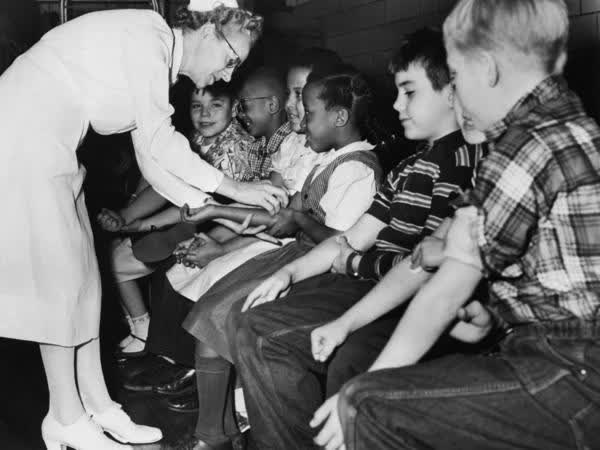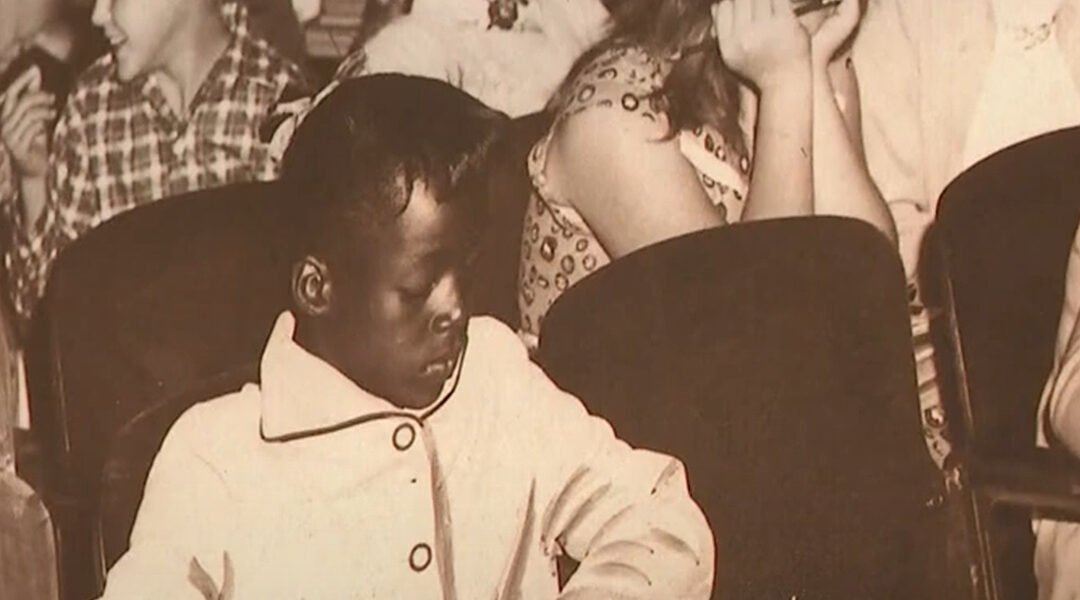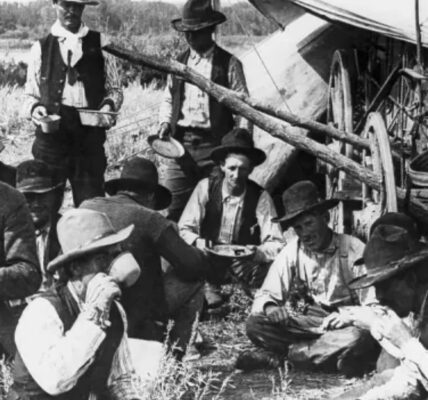In this photograph, a young girl sits quietly, her books balanced neatly in her lap. Her coat is buttoned, her socks pulled up, her shoes polished. She looks every bit the picture of what any child should be on a school day—ready to learn.

But Donna Jean Barksdale’s seat in this classroom in 1955 was no ordinary seat. It was a battlefield.
At just 11 years old, she became one of the first Black students to integrate an all-white school in Arkansas. This was not a symbolic act carried out by adults in courtrooms or politicians making speeches. It was lived in real time by children like her—children who walked through doors where they were not wanted, who endured glares, whispers, and sometimes even outright hostility.
Look closely at the picture again. Around Donna Jean, rows of white students sit in their seats. Some glance sideways at her. Others look forward, arms crossed, eyes hardened. There is a tension in the air that is almost visible, a sense that this moment was more than just a day at school. It was history unfolding—uncomfortable, raw, and deeply personal.

Just seventy years ago—within living memory—Black children were denied the right to sit in classrooms like this one. They were forced into underfunded, segregated schools, told by law and by society that their education and their futures were worth less than their white peers. The U.S. Supreme Court’s Brown v. Board of Education ruling in 1954 declared segregation unconstitutional, but rulings on paper do not change hearts overnight. Change had to be lived, day by day, step by step, by children like Donna Jean who carried courage beyond their years.
Imagine what it took for her to rise each morning, put on her clothes, gather her books, and walk into that building. Imagine the strength it took for her parents to send her there, knowing she would face cruelty but believing that the doors she opened would matter for generations to come.
Donna Jean was not just a student. She was a pioneer. Every lesson she endured in that classroom was not only arithmetic, reading, or history—it was also a lesson in survival, in resilience, in the power of quiet defiance.
The bravery of children like Donna Jean reshaped America. Because of them, the walls of segregation began to crack. Because of them, new generations of Black children could sit in classrooms once denied to them. Because of them, the promise of equality moved one step closer to reality.
And yet, this photo reminds us: it wasn’t long ago. This is not ancient history. This is within a single lifetime—just seventy years since a Black child could sit in the same classroom as a white child. Seventy years since our nation began to take its first halting steps toward living up to the ideals it claimed to stand for.
So when people say “Black history is American history,” this is what they mean. Donna Jean Barksdale’s story is not a side note or an elective chapter—it is the heart of our national story. It is the story of courage in the face of hatred, of dignity in the face of exclusion, of children leading the way when adults faltered.
Never let anyone tell you Black history doesn’t matter. Because without it, America’s story is incomplete.

Remember her name. Remember her courage. Remember that progress is not inevitable—it is fought for, seat by seat, classroom by classroom, child by child.
And remember this picture, of a young girl sitting straight-backed in her chair, clutching her books, quietly rewriting history for us all.




